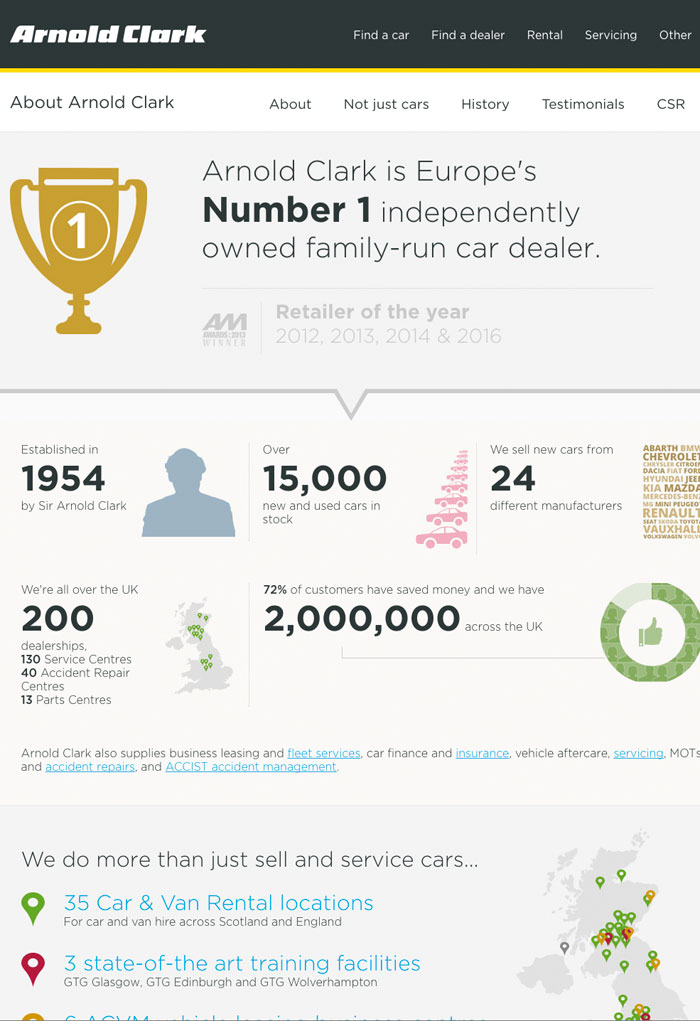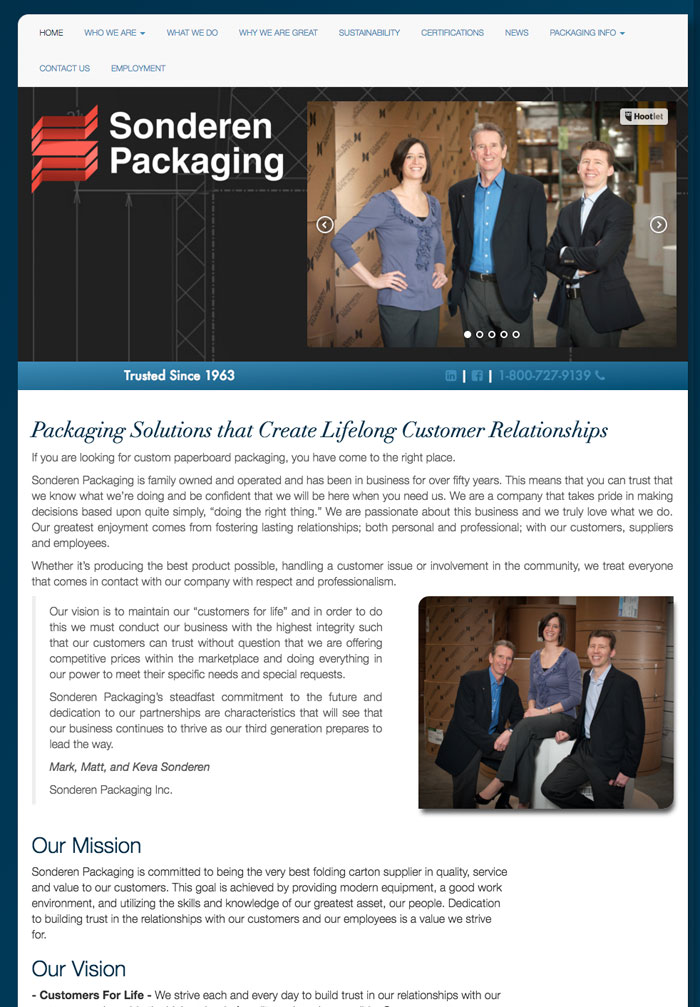Family Business Branding and The Secret Drivers to Brand Success
At his Tuscan estate overlooking Siena, Dr. Francesco Mazzei pours a glass of ruby red Chianti Classico while beginning to tell the story behind the distinctive label that represents several legacies: the name of his family’s medieval country house castle, the village hamlet, the family winery, and the year it was founded. “Castello Fonterutoli Mazzei 1435” wine is one of the acclaimed reds the Mazzei family has been producing for a remarkable 24 generations; in fact, in terms of family business branding, they’re one of the ten oldest family enterprises in Italy. Naturally, wine lovers are intrigued to hear more from the charismatic Marchesi Mazzei and eager to taste his time-honoured Chianti.

Image via Mazzei
Family Business Brands Drive the Economy
Family-owned and operated businesses come in all shapes, sizes, and ages. Yet they share the roots of a common attribute: quintessential authenticity. A family business brand has a distinctly personal voice and can uniquely build unparalleled trust. Trust underpins profitable brand growth because without trust customers won’t buy from you.
It’s critical to understand, whether your business is a family enterprise or not, branding is NOT marketing or design but the bedrock strategy supporting and directing your whole business so your brand strategy is fundamental to your business’s longevity and ongoing profitability.
Global management consultancies are wise to keep a keen eye on family enterprises. EY suggests that family business is the world economy’s “secret driver of success.” Their research library published a 2015 report undertaken with Kennesaw State University Cox Family Enterprise Center (Georgia, USA) indicating that: “The importance of family businesses to the global economy is undeniable. They account for more than two-thirds of all companies around the world, many of which are household brand names, and 50%–80% of employment in most countries.”[1]
At the KPMG Family Business Practice Global Think Tank, the group’s CEO for France explains, “It’s a philosophy, it’s a spirit, it’s a backbone of our economy.” [2]
“Before the multinational corporation, there was family business. Before the Industrial Revolution, there was family business. Before the enlightenment of Greece and the empire of Rome, there was family business.” – William T. O’Hara, author, “Centuries of Success |
We’re all busy so building the bedrock brand strategy supporting and directing your whole business to ensure it’s growth and sustained longevity may not be your top skillset. If you’d like professional branding input and want access to a detailed overview of what’s key in the brand strategy context to grow your business then get in touch? Alternatively book one of our transformational workshops, brand building intensives or masterclasses.
The Persona Brand Building Blueprint™ Mastermind empowers you to build your brand strategy, raise the visibility of your brand, reduce customer acquisition costs and position your brand as the №1 choice for your customers.

Build your standout brand at the Persona Brand Building Blueprint™ Mastermind with Lorraine Carter
Family Business Branding Has a Lasting Brand Message
“From our family to yours…” is a strong, positive, relatable and emotive message. Family businesses are proud of their companies and their families, with 76 percent of those reporting in the EY study saying they refer to themselves as a family business in advertising, websites, social media, press releases and other promotional material and brand collateral. [3]
Related: Design Is NOT Branding: 10 Things Every Business Owner and Entrepreneur Should Know
Nothing is more enduring as a family business than two hospitality examples from Japan. Zengoro Hoshi is the 46th generation boss of The Hoshi Ryokan, a traditional Japanese inn established 1,300 years ago.

Image via 663 Highland (Wikimedia CC 2.0)
The world’s oldest hotel is run by Fujiwara Mahito, the 52nd generation descendant to manage Nishiyama Onsen Keiunkan since the year 705, beside hot springs where travelling samurai and Shogun once stopped to refresh.[4] In an interview with the KPMG Family Business Think Tank, Hoshi explains that both the family and the business core values are seamlessly expressed and impressed, “instilling the simple business motto in each new generation.”[5]

Related: 7 Powerful Components Of A Lasting Luxury Brand
When success breeds success and astronomical growth and wealth occur rapidly in the span of one lifetime, keeping customers connected to core brand values is a strong message that the founder can embrace and project. Two powerful examples of self-made 20th-century patriarchs are seen here:
Family Business Branding Through Their Founders Can Embody Authentic Brand Values
1) IKEA – From humble beginnings, one of the world’s wealthiest individuals is the 90-year-old founder of the largest furniture store group on earth, as well as the second-largest charitable foundation. He eschews the trappings of wealth, living in his boyhood rural Älmhult municipality, where IKEA headquarters is located.
Related: Social Responsibility: How to Build a Socially Conscious Brand
As a boy, Ingvar Kamprad bought matches in bulk from Stockholm to re-sell via bicycle in the vicinity of his parents’ farm, Elmtaryd, in the small Swedish village of Agunnaryd. As a teenager, Ingvar expanded into seeds, pencils, wooden Christmas decorations and more items. Working at the kitchen table, he named his little enterprise IKEA, combining his own initials plus the farm name and the village name.
In the autobiographical “Leading by Design: The IKEA Story,” and in the resource “Ikea Bible,” founder Kamprad has emphasized that “wasting resources is a mortal sin at Ikea.”[6] In his years at the helm of the budget-focused retailer, now run by his son, Kamprad pursued management by example, that is, emphasizing cost control. He has spoken of shopping post-season sales, flying economy class, driving a 20-year-old Volvo and encouraging staff to use both sides on a piece of paper.[7]
2) Berkshire Hathaway – Another farm kitchen table entrepreneur empowered by his bicycle, a young Warren Buffett sold chewing gum, Coca-Cola bottles, and weekly magazines door-to-door in his native Omaha, Nebraska.
Ever thrifty at age 86, Buffett is currently ranked as the world’s third wealthiest person[8], the legendary investor is grounded and approachable. He pays himself a modest salary of $100,000 annually and still lives in the Omaha home he purchased for $31,500 in 1958.
A voracious reader, Buffett practices his brand philosophy, frequently sharing advice with groups of college students to remind them that the best thing they can do is develop good qualities and habits early.[9]
Family Business Branding Creates Meaningful Brand Differentiation
Nobody can weave a more engaging, authentic brand story than a family business, and this is key to one of a brand’s eight pillars: differentiation. The perceived distinctiveness of the brand instantly separates a family brand from its competition. These brand pillars are fundamental to success regardless of your brand sector, B2B or B2C — which has also been abundantly evidenced by our experience in working with small and large family businesses nationally and internationally.
Related: 4 Reasons Why Your Business Profit Starts With Your Brand Mission
How did a first-generation pioneer build a company from nothing to pass on to the next generation? What was the initial spark of an idea? These are the stories that inspire pride and loyalty among employees, customers, suppliers and the local community. Such wonderfully curated (and honest!) anecdotes can be as juicy and delicious as your grandmother’s time-honoured recipe for apple pie.
If birthright or marriage has made you lucky enough to inherit a family brand, or if you aspire to achieve a highly recognisable, memorable — and loved — brand name, our Personality Profile Performer™ Programme shows you how to build your brand so you become, or maintain number one place in your market — how to enhance your brand relevance and improve your profits.
Also, times flies and we are aware that family businesses must be astute about strengthening, re-evaluating and leveraging brand relevance while training and managing succession and growth over the next 5, 10, 15-plus years. If you want in-person professional direction to re-evaluate your brand and would like professional input then drop us a line to [email protected] or give us a call T: +353 1 8322724 (GMT). We’d be delighted to talk with you.
Examples of Intimate Brands in SMB/SME Family Business Branding

Image via Goorin Bros. Hatmakers
What We Love: Vintage sepia tones and modern fashion shots merge on this American hatmakers’ website. It’s sprinkled with historical anecdotes, providing interesting insights into the family brand established in 1895 (I know anything over a century is almost ancient, by American standards!) Goorin Bros. is painfully aware that hats are no longer the mandatory accessory they once were. The website relates the compelling story of brand survival and interprets the castle logo design.

Image via Goorin Bros. Hatmakers
Takeaway: Cosy store interiors are decorated in vintage style, including an antique popcorn machine spitting out free samples, with highly personal assistance from the well-trained hat sellers.
Related: The Impact of Company Brand Culture On Driving Performance and Increasing Sales

Image via Manor Farm
What We Love: More than 240 years later, one of Ireland’s oldest companies remains a family business. To establish an immediately personal connection to the brand, the website’s “Welcome Home” page features a seal of approval-style stamp reading “Irish Family Owned Since 1775.” It invites visitors for a glimpse behind the scenes to “Meet the Flock” of family farmer suppliers via their outdoor snapshots and to share the “Tasty News” recipe buddy.

Image via Manor Farm
Takeaway: Manor Farms engages their B2B and B2C audiences by using humour. Chicken Facts & Tips includes Q&A such as “Are the chickens really Irish?” and “Can a chicken fly?”
Related: From Zero to Hero: How to Become a Must-Have Brand

Image via Arnold Clark
What We Love: In 1954, Arnold Clark purchased a Morris Ten Four for £70 and, after many careful hours restoring the car to its original condition, sold it for a profit. The brand’s storyline is front and centre on the website where Arnold Clark proclaims itself “Europe’s Number 1 independently owned family-run car dealer.” One of Scotland’s largest companies, the family-owned firm run by its founder, whose story is a centrepiece for the brand. Sir Arnold is still in charge and has been joined in the business by his children and grandchildren.

Image via Arnold Clark
Takeaway: The Arnold Clark testimonial page tells the story in the customers’ own words and leaves no room whatsoever for anything but strong assurances about the brand’s commitment to integrity.
Related: How to Develop Your Brand Tone of Voice to Increase Sales

What We Love: Massey Bros. provide a really important service in one of the oldest services in society. They take care of you and your family in very distressing circumstances, the death of a loved one. They deal with death on a daily basis throughout the year. And yet their mission in dealing with death every day is to do whatever it takes to make the recognition and memory of your loved really special. Their mission is to Honour the Life of your loved one.
Massey Bros. is a business that can’t market itself like most others, they can’t overtly sell what they do, but they can share why they do what they do. Their purpose it what drives their big why and it’s one of the critical secrets to their success since the 1930s.

Takeaway: Testimonials that support the brand promise are featured throughout the website, which makes all the sense in the world in any business, especially one that requires utter all-encompassing care and total discretion.
Full disclosure: Persona Design worked with Massey Bros. on their brand revitalisation. You can read the case study here. In truth, haven’t worked with any other business which gets the amount of unsolicited thank you cards and letters that Massey Bros. get. They truly live their brand mission, like many other successful and very dedicated family businesses.
What We Love: The Sonderen tagline, “Packaging Solutions That Create Lifelong Customer Relationships” gets to the core of this family-owned B2B operation where we meet the second and third generation Mark, Matt, and Keva Sonderen, “Trusted Since 1963.” A complete folding carton manufacturer in Spokane, Washington USA, they do everything custom from design to finish, including inks, hard surface coatings, and die cut options.

Image via Sonderen Packaging
Takeaway: A video, “Want to Learn More About Who We Are” presents the passion behind the business, its growth from 8 to 140 employees and its recovery from a devastating warehouse fire to achieve a customer retention rate above 95 percent.
Questions to Ask Yourself About Your Family Business Branding
- Have you identified your eight brand pillars and evaluated how they’re addressed from the customers and team internal perspective? These include elements such as your brand purpose, vision, values and personality.
- Have you developed passionate storytelling about your brand involving personal bits and pieces about family members that pertain to building the company and have those authentic story nuggets been shared congruently across all your brand touchpoints?
- Have you fully developed your standout brand messaging with its own unique personality, copywriting, language style and turn of phrase? Does your family business take full advantage of its brand messaging opportunities across all relevant brand collateral and media channels on and offline?
- Have you developed and displayed a proud history timeline in the proper tone of voice to suit your brand?
- Is there a cohesive branding message and visual language across every customer touchpoint, from website to logo, from uniforms, to colour palette and packaging, for example?
- Has the company story been shared with employees? Is it featured in all new hire training materials? Have your team been fully brand inducted and is ongoing training a part of your brand culture for ensuring cohesiveness, strong morale, innovation, growth and longevity?
[1] Global Data Points; Family Enterprise Statistics from around the World, Family Firm Institute, www.ffi.org/?page=GlobalDataPoints
[2] http://www.kpmgfamilybusiness.com/family-business-contributors
[3] http://www.ey.com/us/en/newsroom/news-releases/news-ey-family-business-is-the-world-economys-secret-driver-of-success
[4] http://www.atlasobscura.com/places/nishiyama-onsen-keiunkan
[5] http://www.kpmgfamilybusiness.com/worlds-oldest-family-inns-secret-succession
[6] http://www.forbes.com/profile/ingvar-kamprad
[7] Ibid.
[8] http://www.forbes.com/profile/warren-buffett
[9] http://www.forbes.com/sites/patbrans/2017/01/02/what-warren-buffett-and-ann-graybiel-advise-on-habits/#422723085d95







Leave a Reply
Want to join the discussion?Feel free to contribute!